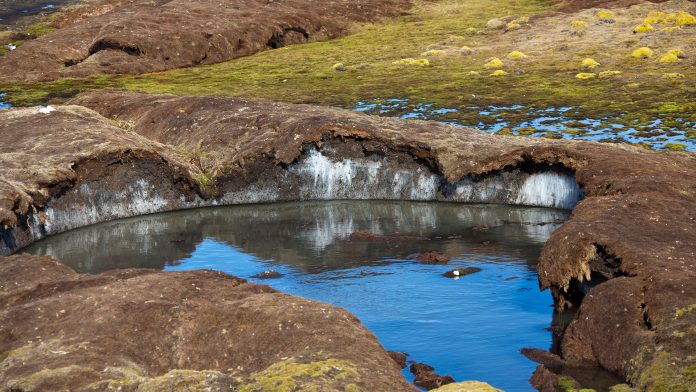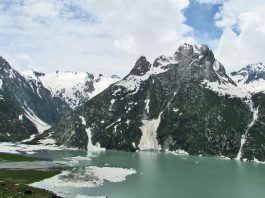The melting of permafrost is revealed to be causing threats to both existing infrastructures and residents in high-risk areas.
Permafrost plays a central role in the sustainable development of the Arctic region, and is predicted to damage buildings and roads, which will lead to tens of billions of euros in additional costs in the near future, according to an international review coordinated by Finnish geographers.
Permafrost exists extensively in places such as the Tibetan plateau, and others in the Artic region and mountain ranges. Both the construction itself and the warming of the climate cause permafrost to thaw, which in turn threatens both existing infrastructure and future construction projects.
In the ‘literature review’, covering the permafrost area of the whole Northern Hemisphere, it was observed that the proportion of damaged structures in the entire building stock ranged from less than 10% to as high as 80%. Russia had the greatest share of damage, while on the Tibetan plateau and in parts of Canada, damage was about 30%.
“According to published research, damage was lowest in the European permafrost area, such as the Alps and Svalbard,” explained Professor Jan Hjort, of the Geography Research Unit at the University of Oulu.
Forecasts reveal growing damage of permafrost thawing, and rising costs
As much as 70% of today’s infrastructure is in within the risk area, when the warming of the ground caused by climate change is considered. “About 500 Arctic villages and cities are located in areas where permafrost is expected to thaw by the middle of this century,” said Professor Miska Luoto of the Department of Geosciences and Geography at the University of Helsinki.
Transport and transportation infrastructure, such as railways, and oil and natural gas pipelines, are seemingly in the most vulnerable positions. Relatively speaking, the greatest amount of infrastructure is in high-risk areas in the mountainous regions of Central Asia, where temperatures of permafrost are already close to 0°C.
“We must consider that in these geographically very extensive analyses, it has not been possible to take into account the ‘heat load’ caused by construction and buildings themselves, so the threats could easily become tangible in extensive damage to buildings before the end of this century,” Hjort explained.
The costs of infrastructure maintenance and repair related to the bearing capacity of permafrost could potentially reach about €30bn in the Arctic region by 2060. In Russia alone, the costs could exceed €20bn. However, the estimates were discovered to contain a large amount of uncertainty caused by the data. “The fact that no corresponding cost estimates have been available from the extensive permafrost areas in China can also be seen as a drawback,” Luoto added.
Proposals for a more sustainable future to mitigate potential threats
The review also puts forward ways to try to prepare for future threats. Also needed, in addition to numerous existing solutions of construction technology, are more precise forecasts of future changes in permafrost. More detailed data and forecasts could enable better surveys of areas in danger and more detailed cost estimates.
Also, better dialogue among researchers, planners, builders, decision-makers, and other actors in the permafrost area was seen as important in the search for a more sustainable future.









